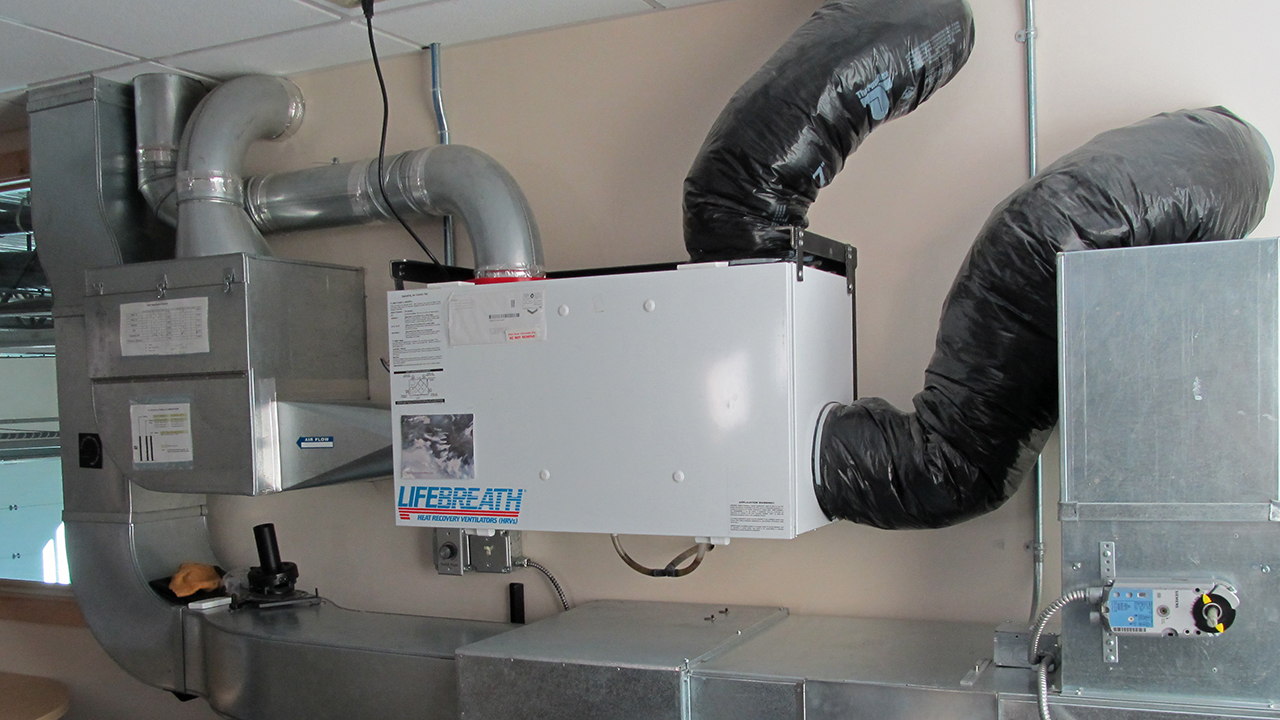Myths About HRV That Homeowners Should Avoid
Wiki Article
How Heat Recovery Ventilation Enhances Indoor Air Top Quality and Reduces Energy Expenses
Heat Recovery Ventilation (HRV) systems play a crucial duty in improving indoor air quality while all at once lowering energy expenses. By effectively exchanging stale indoor air with fresh outside air, HRVs aid preserve perfect humidity and decrease pollutants. In addition, their capacity to recoup warmth from outgoing air minimizes the stress on heating and cooling systems. As energy costs remain to climb, comprehending the complete capacity of HRV systems comes to be significantly crucial for house owners and companies alike.Comprehending Heat Recovery Ventilation Solutions

Heat recovery ventilation (HRV) systems play a crucial function in improving indoor air high quality, especially in contemporary, energy-efficient buildings. These systems are made to move warmth from the outgoing stale air to the inbound fresh air, consequently decreasing power loss while maintaining suitable temperature levels inside your home. HRVs include a warmth exchanger, followers, and ductwork, promoting the continuous flow of air. By removing indoor pollutants and presenting fresh air, HRVs aid to balance moisture levels, protect against mold growth, and lower allergens. The performance of HRV systems hinges on their capability to recuperate as much as 80% of the heat from the worn down air, promoting energy preservation while making certain a healthy interior atmosphere. Their integration is vital in attaining lasting living practices.
The Value of Indoor Air High Quality
Indoor air quality (IAQ) is an essential element influencing the wellness and well-being of passengers in any setting. Poor IAQ can result in various health issues, consisting of breathing issues, allergic reactions, and exhaustion. Furthermore, it can intensify status quo such as bronchial asthma. Variables adding to reduced IAQ include contaminants from indoor resources like cleaning agents, mold, and insufficient air flow. Consequently, preserving good IAQ is essential for promoting a secure and comfortable living or working space. Efficient strategies to boost IAQ entail regular surveillance of air quality, correct air flow systems, and reducing using unsafe materials inside your home. By prioritizing IAQ, individuals can ensure a much healthier atmosphere that promotes productivity and overall lifestyle.Power Efficiency Advantages of HRV Equipments
Lots of property owners and building managers are progressively acknowledging the energy performance advantages of warm healing air flow (HRV) systems. By transferring heat from worn down interior air to incoming fresh air, HRV systems noticeably minimize the power needed for cooling and heating. This process decreases dependence on traditional HVAC systems, causing reduced power expenses. Furthermore, HRVs help keep a well balanced indoor environment, stopping too much home heating or cooling needs. The ability to recuperate approximately 90% of the warm from outgoing air also sustains sustainability initiatives by reducing total power usage. As a result, HRV systems add not just to set you back financial savings however also to a decreased carbon footprint, lining up with the expanding focus on energy-efficient building methods.Installment and Upkeep Considerations
The reliable implementation of heat recovery air flow (HRV) systems calls for mindful factor to consider of installment and maintenance factors to assure peak efficiency. Appropriate positioning of the HRV unit is essential, as it needs to be set up in a location that maximizes air movement while decreasing sound interruption. Furthermore, ductwork should be properly sized and protected to avoid power loss. Routine maintenance, consisting of filter substitute and system cleaning, is critical to protect ideal performance and interior air top quality. Proprietors need to establish a routine maintenance routine to recognize and attend to prospective issues prior to they rise. Collaboration with experienced professionals throughout both setup and maintenance phases can boost the longevity and effectiveness of HRV systems, inevitably bring about far better interior atmospheres and lowered power expenses.
discover this
Real-World Applications and Success Stories
Checking out real-world applications of heat healing air flow (HRV) systems reveals their considerable influence on interior air top quality and energy performance throughout numerous setups. In property structures, home owners have actually reported improved air top quality, causing fewer allergies and breathing problems. Schools executing HRV systems have actually kept in mind enhanced trainee concentration and minimized absenteeism due to better ventilation. Industrial buildings, such as offices and retail rooms, have experienced reduced power expenses and increased worker performance. A business office in a pleasant climate achieved a 30% reduction in power expenses after setting up an HRV system. These success tales demonstrate that HRV modern technology not only adds to much healthier environments however additionally supplies substantial monetary benefits, making it a useful investment for numerous industries.Regularly Asked Concerns
Can HRV Solutions Lower Allergens in Indoor Air?
The effectiveness of HRV systems in minimizing interior allergens mainly rests on their ability to filter and exchange air. HRV Heat Recovery Ventilation. By constantly replacing stale air, these systems can substantially decrease allergen degrees throughout interior atmospheres
Exactly How Does Moisture Affect HRV System Efficiency?
Humidity substantially affects HRV system efficiency; high levels can lead to condensation, lowering efficiency, while low moisture might boost air exchange. Stabilizing moisture is important for ideal operation and maintaining interior air high quality.Are HRV Equipments Noisy During Procedure?
HRV systems can create varying sound levels during operation, depending on their style and installment. Some devices run quietly, while others may create recognizable audio, particularly at greater air flow setups or when improperly kept.What Is the Typical Life-span of an HRV System?

Can HRV Systems Be Made Use Of in All Environments?
HRV systems can be used in click this different climates, but their performance may vary - HRV Heat Recovery Ventilation. In severe temperatures, modifications or supplementary systems might be required to assure excellent efficiency and convenience while maintaining indoor air high qualityReport this wiki page